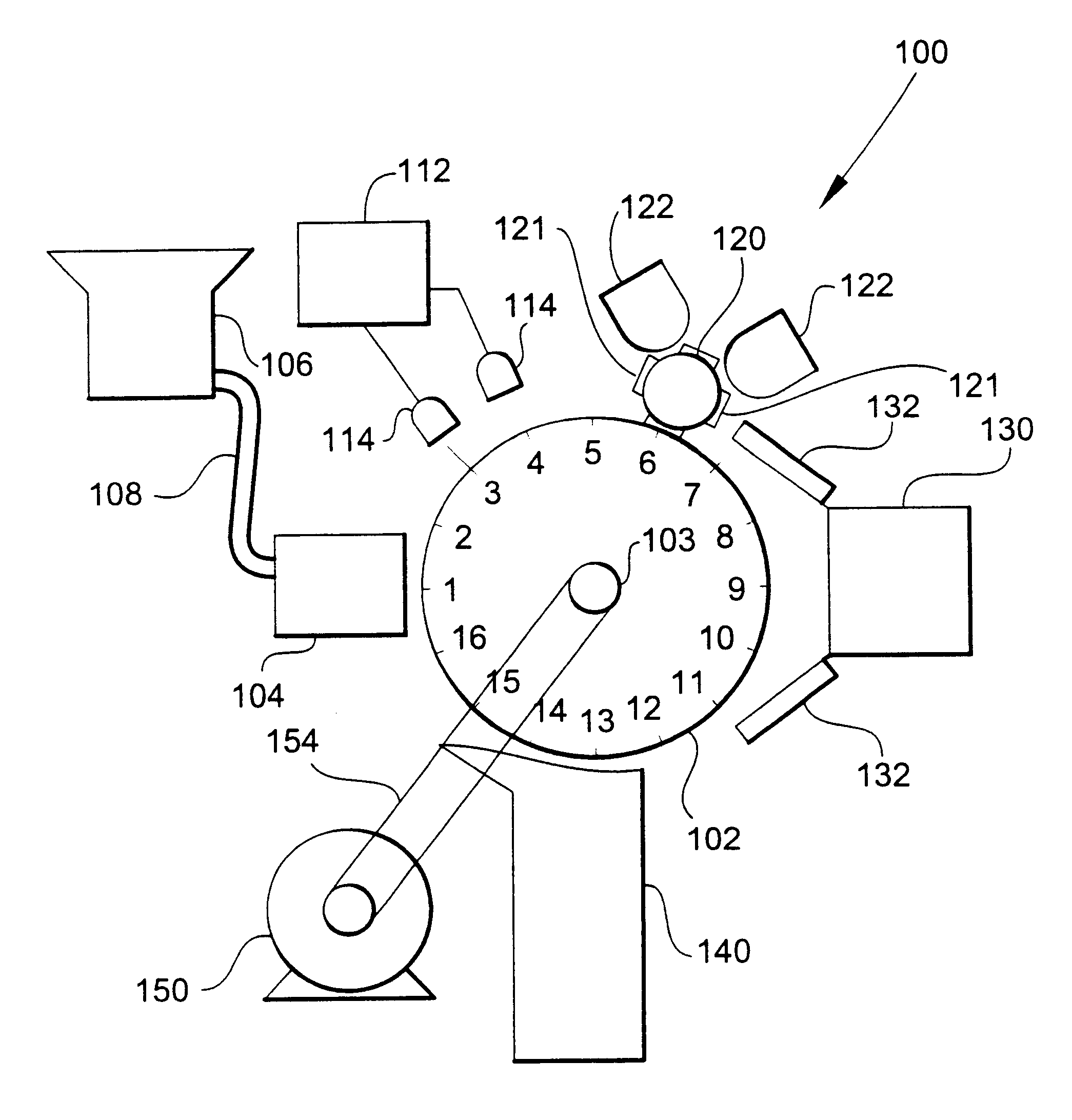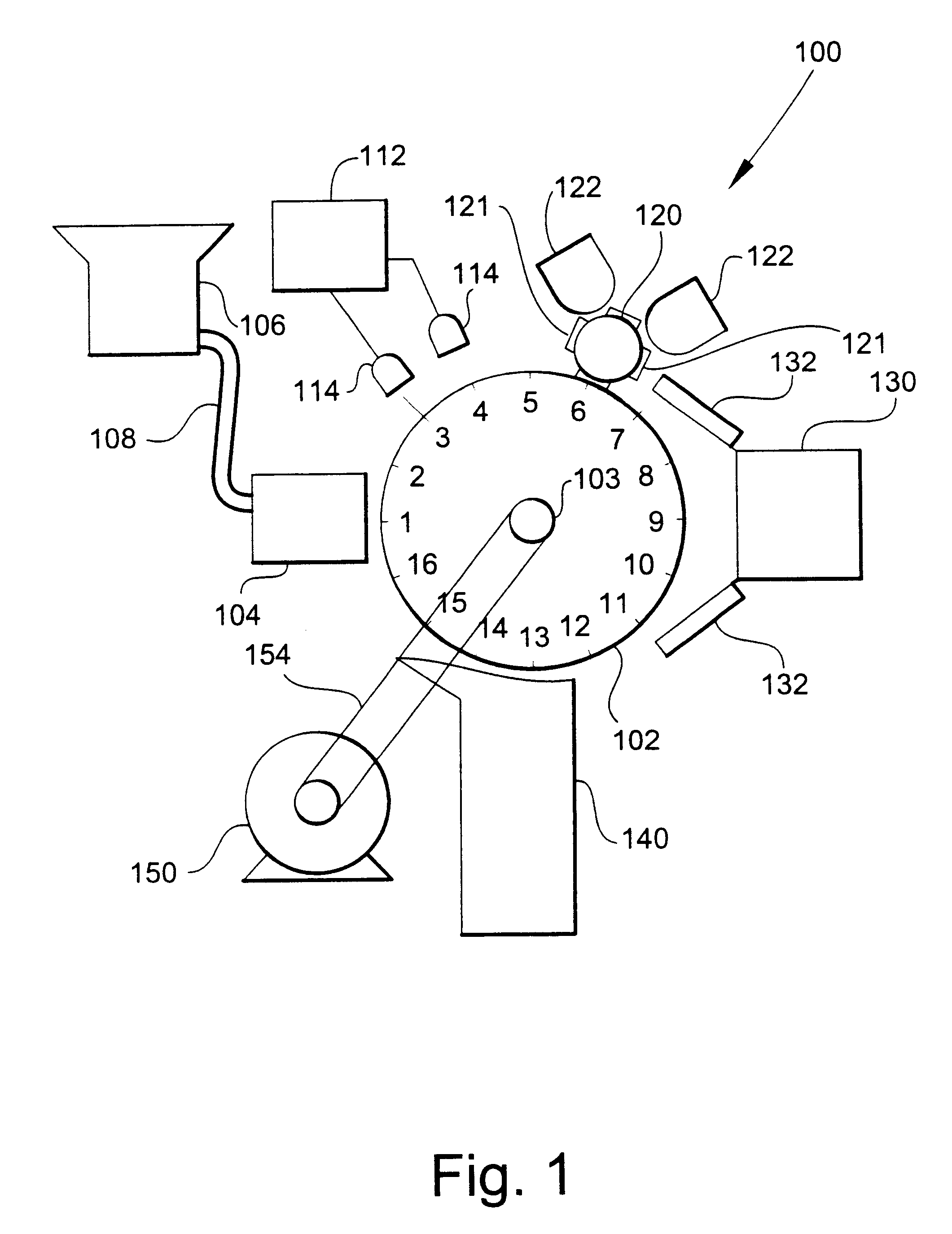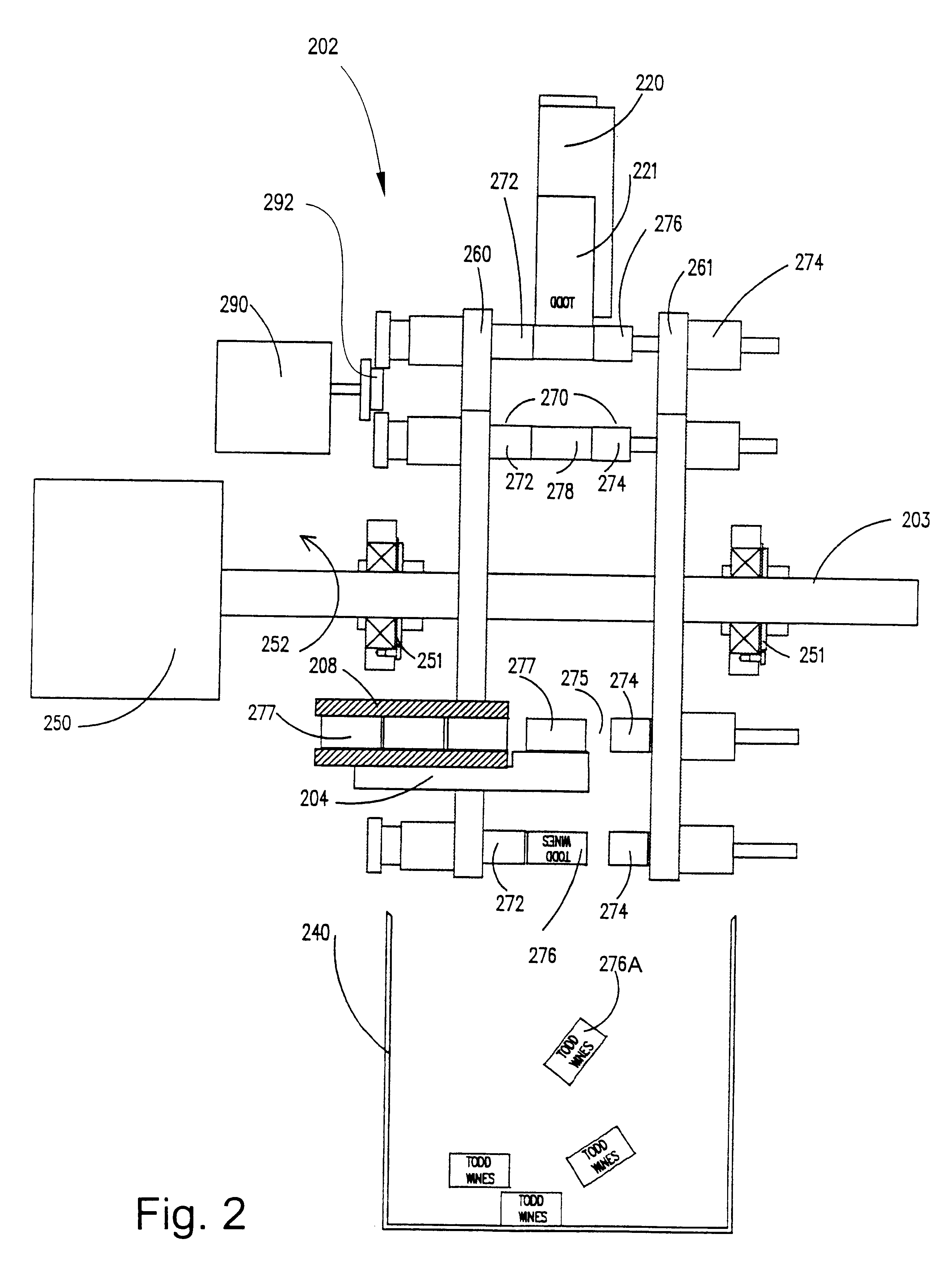Dry offset rotary printer for labeling wine corks
a technology of rotary printer and wine cork, which is applied in the direction of printing presses, office printing, printing, etc., can solve the problems of ineffective use of printing machines for printing indicia on natural cork stoppers and ineffective use of synthetic cork stoppers, so as to reduce the likelihood of damage and reduce the down time caused by corks not properly releasing from the print drum
- Summary
- Abstract
- Description
- Claims
- Application Information
AI Technical Summary
Benefits of technology
Problems solved by technology
Method used
Image
Examples
Embodiment Construction
Referring now specifically to the drawings, a cork printer according to the present invention is illustrated in FIG. 1 and shown generally at reference numeral 100.
As used herein, the terms "cork," "corks," and "cork stopper" refer to synthetic and natural cork stoppers. Elements having the same or similar functions in the various Figures have similar reference numerals.
FIG. 1 illustrates a dry offset rotary printing machine 100 used for the printing of synthetic cork stoppers. The printing machine 100 comprises a rotatable Ferris wheel mechanism 102 having a plurality of evenly spaced carriers mounted a pre-determined radial distance from and parallel to the axis of rotation of Ferris wheel mechanism 102. Each carrier rotatably holds a synthetic cork stopper to be treated, printed and dried in the machine. Ferris wheel mechanism 102 illustrated in FIG. 1 has sixteen carrier positions, numbered 1 through 16. Each of these positions has a cork stopper carrier although it is not requi...
PUM
 Login to View More
Login to View More Abstract
Description
Claims
Application Information
 Login to View More
Login to View More - R&D
- Intellectual Property
- Life Sciences
- Materials
- Tech Scout
- Unparalleled Data Quality
- Higher Quality Content
- 60% Fewer Hallucinations
Browse by: Latest US Patents, China's latest patents, Technical Efficacy Thesaurus, Application Domain, Technology Topic, Popular Technical Reports.
© 2025 PatSnap. All rights reserved.Legal|Privacy policy|Modern Slavery Act Transparency Statement|Sitemap|About US| Contact US: help@patsnap.com



